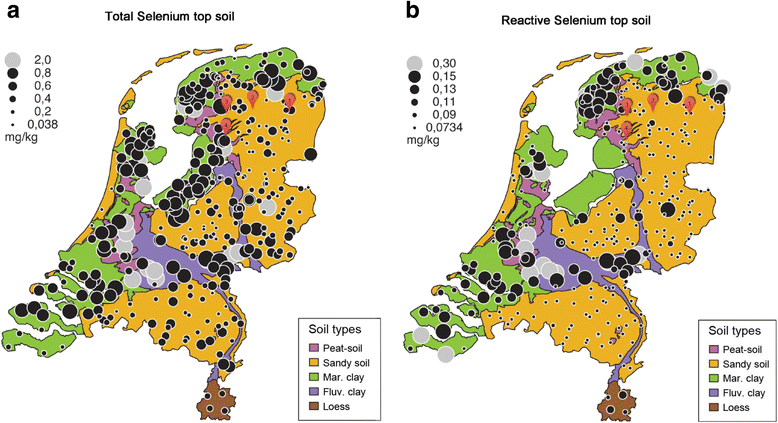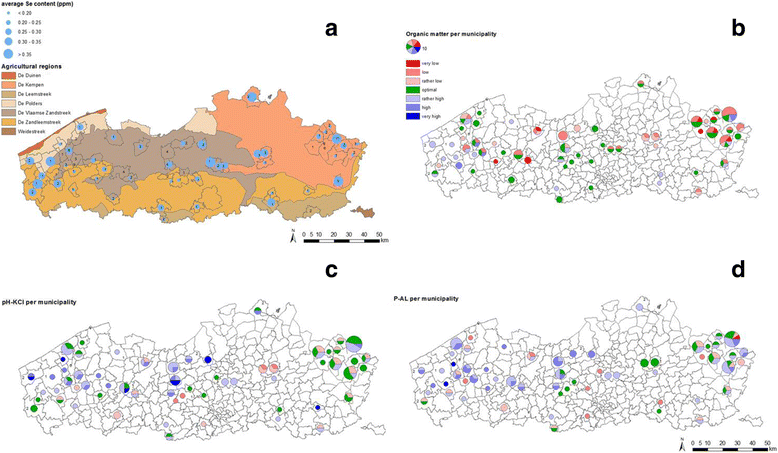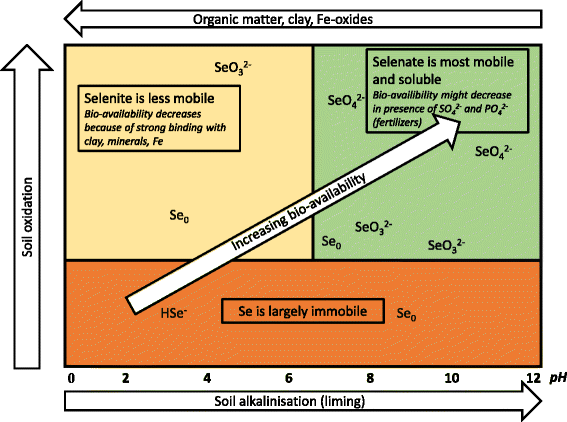White muscle disease in foals: focus on selenium soil content. A case series
- PMID: 28468621
- PMCID: PMC5415829
- DOI: 10.1186/s12917-017-1040-5
White muscle disease in foals: focus on selenium soil content. A case series
Abstract
Background: White muscle disease (WMD) is a nutritional myopathy caused by selenium (Se) deficiency. In most soils, Se is present in low concentrations, sometimes even below 0.2 mg/kg, a trend which is seen in many countries. Apart from total soil Se concentrations, soil conditions may be such that the bio-availability of Se is so low that it causes very low uptake in plants which can ultimately lead to deficiency problems in animals. This is the first case series to report clinical WMD in foals in areas deficient in Se, in the Netherlands. The aim of the current report is to provide an overview of the clinical history, symptoms and (clinical) pathology of 8 newborn foals living at 4 different premises and suffering from WMD together with the effectiveness of Se and vitamin E (Vit E) supplementation in the affected foals, their dams and herd members. Hands on practical information is provided to apply a correct and effective Se supplementation management in horses and which pitfalls need to be avoided for a successful approach.
Case presentation: Case features and history were mapped out for all foals. Se and Vit E status were assessed for the foals, their dams and herd members, at admission and after 3 months of Vit E/Se supplementation. Common symptoms were muscle weakness, inability to rise, lethargy and inadequate suckle reflex together with increased serum muscle enzymes and low glutathione peroxidase (GSH-Px) and low to normal serum vit E levels. Necropsy revealed necrosis of skeletal muscles consistent with nutritional myopathy. Se status of the dams and herd members correlated well with the Se status of the foals. All surviving foals (n = 6) showed normal Vit E and GSH-Px levels after supplementation, likewise, all horses tested at premises 1, 3 and 4. However, dams and herd members in premises 2 showed no normalization. Horses of that premises were diagnosed with pyrrolizidine intoxication one year prior to the study.
Conclusions: Certain regions in the Netherlands are sufficiently Se deficient to predispose newborn foals to develop WMD, especially when they are being fed a diet that mainly consists of locally harvested roughage.
Keywords: Liver disease; Nutritional myopathy; Selenium; Soil analysis; Vitamin E.
Figures




Similar articles
-
White muscle disease of foals.Vet Clin North Am Equine Pract. 1997 Apr;13(1):169-85. doi: 10.1016/s0749-0739(17)30262-6. Vet Clin North Am Equine Pract. 1997. PMID: 9106350 Review.
-
Effect of selenium supplementation and plane of nutrition on mares and their foals: selenium concentrations and glutathione peroxidase.J Anim Sci. 2010 Mar;88(3):991-7. doi: 10.2527/jas.2008-1743. Epub 2009 Nov 6. J Anim Sci. 2010. PMID: 19897622
-
Selenium deficiency associations with gender, breed, serum vitamin E and creatine kinase, clinical signs and diagnoses in horses of different age groups: a retrospective examination 1996-2011.Equine Vet J Suppl. 2012 Dec;(43):31-5. doi: 10.1111/j.2042-3306.2012.00643.x. Equine Vet J Suppl. 2012. PMID: 23447875
-
Studies on serum selenium and tocopherol in white muscle disease of foal.Nihon Juigaku Zasshi. 1989 Feb;51(1):52-9. doi: 10.1292/jvms1939.51.52. Nihon Juigaku Zasshi. 1989. PMID: 2927038
-
Selenium in human health and disease with emphasis on those aspects peculiar to New Zealand.Am J Clin Nutr. 1980 Feb;33(2):303-23. doi: 10.1093/ajcn/33.2.303. Am J Clin Nutr. 1980. PMID: 6766657 Review.
Cited by
-
A Summary of New Findings on the Biological Effects of Selenium in Selected Animal Species-A Critical Review.Int J Mol Sci. 2017 Oct 21;18(10):2209. doi: 10.3390/ijms18102209. Int J Mol Sci. 2017. PMID: 29065468 Free PMC article. Review.
-
Selenium: implications for outcomes in extremely preterm infants.J Perinatol. 2018 Mar;38(3):197-202. doi: 10.1038/s41372-017-0033-3. Epub 2018 Jan 3. J Perinatol. 2018. PMID: 29298985 Free PMC article. Review.
-
Nutritional deficiencies and abortions in sheep and goats: An in-depth study from East Azerbaijan Province, Northwest Iran.PLoS One. 2025 Aug 5;20(8):e0327768. doi: 10.1371/journal.pone.0327768. eCollection 2025. PLoS One. 2025. PMID: 40763282 Free PMC article.
-
Research progress on the biological regulatory mechanisms of selenium on skeletal muscle in broilers.Poult Sci. 2024 May;103(5):103646. doi: 10.1016/j.psj.2024.103646. Epub 2024 Mar 12. Poult Sci. 2024. PMID: 38520938 Free PMC article. Review.
-
Expression Quantitative Trait Loci in Equine Skeletal Muscle Reveals Heritable Variation in Metabolism and the Training Responsive Transcriptome.Front Genet. 2019 Nov 26;10:1215. doi: 10.3389/fgene.2019.01215. eCollection 2019. Front Genet. 2019. PMID: 31850069 Free PMC article.
References
-
- Higuchi T, Ichijo S, Osame S, Ohishi H. Studies on serum selenium and tocopherol in white muscle disease of foal. Nippon Juigaku Zasshi. 1989a;51:52-59. - PubMed
-
- Allen W. New developments in muscle pathology: nutritional myopathies including “muscular dystrophy” or “white muscle disease”. Vet Res Commun. 1977;1:243–250. doi: 10.1007/BF02267655. - DOI
MeSH terms
Substances
LinkOut - more resources
Full Text Sources
Other Literature Sources

